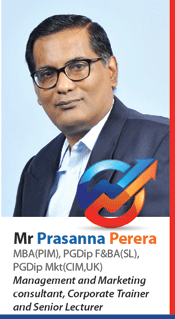THE CONFIDENCE GAP: BRIDGING THE DIVIDE BETWEEN ASPIRATION AND ACTION
View(s):
Introduction
In workplaces across the globe, a pervasive yet often overlooked phenomenon—the confidence gap—continues to hinder progress. This gap, not necessarily rooted in competence or ambition, acts as an invisible barrier that stifles innovation, bold initiatives, and deserving voices. Many professionals find their aspirations thwarted by hesitation, not inadequacy. Addressing this issue is crucial, as it affects not only individuals but also organisational growth, leadership potential, and creativity. Bridging this gap requires fostering an environment that empowers professionals to act decisively and confidently pursue their ambitions.
Understanding The Confidence Gap –The confidence gap reflects a profound cultural and psychological challenge that affects individuals across various roles and industries. Often, this disconnect arises when you possess the skills to excel but are restrained by self-doubt. Influenced by societal expectations, organisational norms, or personal insecurities, this gap can prevent you from realising your potential. To address it effectively, you need to move beyond superficial motivational advice and explore its deeper roots. This journey involves redefining confidence as an actionable state, reclaiming your self-belief, and fostering environments where your boldness is encouraged.
Reframing Failure – You might often misunderstand and stigmatise failure, seeing it as a sign of incompetence. However, successful professionals recognise that failure is an essential part of growth. By embracing a mindset that views setbacks as opportunities for learning, you can diminish the fear of failure and encourage proactive decision-making. If you find yourself in an organisation that promotes experimentation and views failure as a stepping stone to success, you will contribute to a culture of resilience and innovation. This environment empowers you to bridge the confidence gap and approach challenges with a renewed perspective.
Cultivating A Beginner’s Mindset – Cultivating a beginner’s mindset is a transformative approach inspired by Zen philosophy that encourages you to embrace openness, curiosity, and a willingness to explore new ideas without fear of judgment. By adopting this perspective, you can dismantle self-imposed barriers shaped by past experiences and face challenges with fresh eyes. This mindset empowers you to overcome anxiety, embrace uncertainty, and unlock your potential for growth and innovation in today’s complex professional landscapes.
Detaching Action From Outcome – Your confidence can often waver when it is tied solely to results. To cultivate a more resilient form of self-assurance, shift your focus from outcomes to the actions and efforts you put in. By emphasising your dedication, persistence, and the process itself over external validation, you can build confidence that endures, regardless of fluctuating results. This method not only promotes your individual development but also helps maintain your motivation and sense of fulfillment in the long run.
Redefining Success – Redefining success is crucial for your personal and professional growth. Traditional metrics, like promotions and financial rewards, often trap you in a cycle of endless aspiration and disappointment. By shifting your perspective and defining success in terms of personal fulfillment, team contributions, and alignment with your core values, you can cultivate a deeper sense of purpose. This empowered definition enables you to act confidently, bridging any confidence gaps and achieving true professional satisfaction.
Taking Informed Risks – Your confidence significantly increases when you learn to embrace calculated risks. Informed risk-taking involves thoroughly evaluating potential outcomes while weighing the benefits against the challenges that may arise. By adopting a strategic approach to decision-making, you can effectively mitigate self-doubt and take bold, decisive steps toward achieving your goals. This empowering mindset not only fosters your confidence but also enhances your overall decision-making abilities, creating valuable opportunities for career advancement and personal growth.
Leveraging Peer Accountability – Navigating challenges in isolation can often lead to increased self-doubt. By cultivating a network of accountability partners, you can gain mutual encouragement, valuable feedback, and motivation. Sharing your aspirations within a supportive group fosters collective growth and empowers you to take actionable steps toward achieving your goals. This collaborative approach not only bridges the confidence gap but also reinforces your sense of community and belonging.
Embracing Vulnerability As Strength – Embracing vulnerability is often misunderstood as a sign of weakness; however, it is, in fact, a profound strength. By openly acknowledging uncertainties and challenges, professionals cultivate authentic connections and foster supportive workplace cultures. This shared vulnerability not only encourages collective growth and resilience but also empowers you to take bold actions, even in the face of self-doubt, ultimately strengthening both personal and organisational dynamics.
Visualising The Uncomfortable – A critical yet often overlooked technique for bridging your confidence gap involves visualising discomfort. By mentally rehearsing the challenges and uncertainties you may face, you can reduce anxiety and build resilience. This exercise helps you to move beyond your comfort zone, effectively closing the gap between your goals and your actions. Embracing discomfort fosters personal growth and instills confidence in tackling real-world challenges.
Anchoring Confidence In Evidence – Anchoring confidence in evidence is essential for personal and professional growth. By consistently maintaining a tangible record of accomplishments and strengths, you can strengthen your self-confidence. This systematic documentation serves as a valuable resource to revisit during moments of doubt, reinforcing self-belief, celebrating growth, and effectively empowering you to approach future challenges with renewed assurance and determination.

Challenging The Status Quo – Challenging the status quo is essential for you as a professional, specially when you feel pressured to conform to organisational norms that may sideline your own ambitions. Bridging the confidence gap involves you questioning established practices and advocating for meaningful change. By actively challenging conventional approaches, you can take ownership of your aspirations, transforming from a passive participant into an engaged contributor. This shift not only fosters your personal growth but also contributes to the overall development of your organisation.
Conclusion
Bridging the confidence gap is not merely about waiting for the perfect moment or achieving flawless self-assurance. It is fundamentally about taking intentional action, however imperfect, to effectively narrow the divide between aspiration and reality. By embracing failure as a learning opportunity, fostering collaboration with others, and redefining what success truly means, professionals can cultivate a robust mindset of growth and resilience. This journey—while often nonlinear and challenging—proves to be ultimately rewarding, unlocking untapped potential for both personal and professional advancement. The confidence gap can indeed be bridged, one decisive step at a time.
HitAd.lk is the best and biggest mobile phone market in Sri Lanka, and we guarantee you will find what you need here from our extensive listing of mobile phones for sale in Sri Lanka. Whether it’s a budget-priced smartphone for communication, or higher end features with advanced connectivity, there are many different options from which to choose from on our site!


